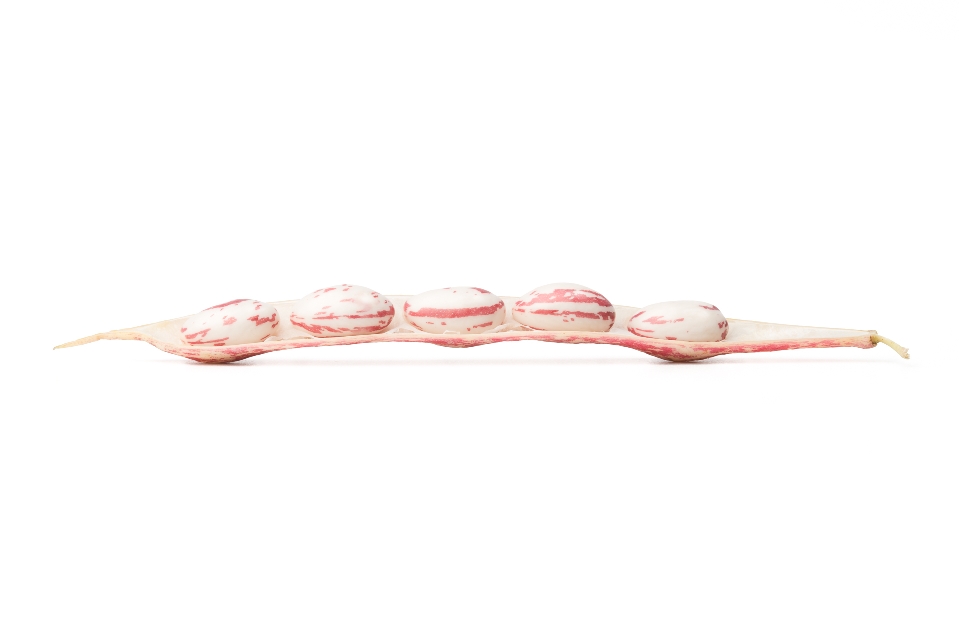Legumes
Cranberry Beans

Hummus is a delicious and healthy staple in our household. It tastes just right at any time of year and is perfect either as a snack with some pita or crackers, or as a full meal served with chopped tomatoes, cucumbers and green bell peppers in the summer or roasted vegetables in the colder season.
Americans have of course caught on to this Middle Eastern treat and supermarkets around the country stock various brands. Unfortunately, store-bought hummus is invariably quite acidic as manufacturers use excessive lemon juice or even vinegar or preservatives to extend shelf life. Supermarket hummus can’t compete with freshly made hummus, which tastes more delicate and creamy while retaining enough acidity and salt to keep you reaching back for just one more bite.
If you've looked at my site for more than two minutes, you've probably noticed my tendency to prepare things from scratch. Cooking chickpeas is no exception. The flavor of canned chickpeas is inferior and can liners contain hormone-mimicking BPA or BPA substitutes that leach into the food. This recipe has you cooking dried chickpeas instead, but in a pinch it applies to canned chickpeas just the same: just substitute the canned chickpeas for the cooked ones in the recipe.
The good news is that making your own hummus consists of little more than cooking the chickpeas in water and throwing some ingredients in the blender. Hummus is almost always made with chickpeas but other shell bean varieties are delicious too and make for unusual hummus flavors and colors. Try black beans for a purple hummus, red kidney or Jacob’s cattle beans for a pink hummus or dried fava beans for an earthier hummus. (In case you're wondering, I wouldn't use fresh chickpeas for making hummus. They're quite labor-intensive to shell and their flavor is so delicate that I think it would be a waste to overpower them with tahini. Fresh fava beans on the other hand are a possibility, provided you keep the work to a minimum by keeping the skins on the individual beans).
If you cook dried chickpeas or beans more than occasionally, consider getting a pressure cooker. In my experience it cuts cooking time (and energy use) down to about a third.

Serves 8 to 10 as a snack/appetizer or 4 to 6 as a main course
1.5 cups dried chickpeas (garbanzo beans) or 4.5 cups cooked chickpeas. Alternatively, for a less classic hummus, use 1.5 cups of any other dried shell bean variety or 4 cups freshly shelled beans.
Juice from 1 lemon. Should be a little more than a 1/4 cup.
4 medium-sized garlic cloves
½ cup raw tahini
2 Tbsp olive oil

Like beans, dried chickpeas are usually soaked in cold water for 8-12h before cooking. Don’t let this keep you from cooking chickpeas (or beans) right away though. Some argue they will taste even better without soaking as none of the flavor is washed away in the soaking water. Unsoaked chickpeas will take longer to cook though - I’d assume something like 30 minutes longer, though you should rely on your taste buds, not your timer. To state the obvious, if you’re using fresh beans there is no need to soak them.
Cook the chickpeas in salted water. The chickpeas are done when all of them are soft - there is no such thing as al-dente chickpeas (or beans). Dried chickpeas could easily take 2 hours to cook, but other than making sure they are covered in simmering water you can do other things during that time. Smaller dried beans take a little less time to cook and fresh ones much less, maybe 15-20 minutes.
When the chickpeas are done turn off the heat and drain them, taking care to preserve the cooking liquid. Remove 2/3 of a cup of the cooking liquid and let cool separately. Juice the lemon, peel the garlic cloves and place lemon juice and garlic cloves in a blender or food processor along with the olive oil and some salt. Add the separated (cooler) cooking liquid to the blender as well as just enough of the chickpeas to fill the minimum load requirement of your blender. Blend until the garlic in the mixture is finely pureed. (This step saves you the trouble of pureeing the garlic separately while also preventing the garlic from being cooked in the boiling hot chickpeas.) Add the tahini and remaining chickpeas and blend to your desired smoothness. If the mixture is too thick to operate the blender properly (despite using a tamper tool if your blender has one), then add more cooking liquid to the mixture until it circulates well in the blender. Add more (sea) salt, lemon juice or olive oil to taste.
Freshly made hummus will keep for several days in the fridge. Bring it to room temperature or warm it gently in the microwave before serving it from the fridge.
Add a comment